The MLB draft is a time of hope and promise, and after it's all over, a scout sits with his staff and marvels over the players the team just picked. Well, sometimes the prospects don't work out as planned, as is the case for most of these 22 first-rounders who didn't make the top 30 in my re-draft of the 2009 class. Two of them didn't sign at all, and some reached the majors but were nowhere close to what their drafting teams thought they'd be.
You can see the 2008 "misses" column for comparison. (Spoiler alert: There weren't nearly as many misses.)
(WAR figures are from Baseball-Reference.com.)
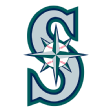 No. 2 overall: Dustin Ackley, Seattle Mariners (8.1 WAR)
No. 2 overall: Dustin Ackley, Seattle Mariners (8.1 WAR)
Ackley ranks 25th in WAR from the draft class, but his career is probably over, so I do not have him on the current top 30. Ackley was the consensus No. 2 talent in the draft class, and I don't think Seattle seriously considered any other player. It seemed like he could really hit, and he was a plus runner, but he had Tommy John surgery before his junior year at North Carolina and played only first base. He never did find a position he could play well in pro ball, and of course he never hit that well, jumping to Double-A right out of college but failing to produce after he reached the majors.
 No. 3 overall: Donavan Tate, San Diego Padres (did not reach majors)
No. 3 overall: Donavan Tate, San Diego Padres (did not reach majors)
I had Tate ranked toward the back of the first round, acknowledging his athleticism but questioning his ability to hit and his enthusiasm for the sport. He never seemed to enjoy playing when I saw him, which is a shame given his natural abilities. Whatever the reasons, he was terrible in pro ball, never hitting in between injuries, benchings and a suspension for a positive drug test. His baseball career ended in 2016, and he never got above high-A.
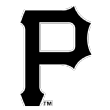 No. 4 overall: Tony Sanchez, Pittsburgh Pirates (0.1 WAR)
No. 4 overall: Tony Sanchez, Pittsburgh Pirates (0.1 WAR)
The Pirates cut a deal with Sanchez, paying him below slot so they could sign a whole passel of high school arms to over-slot deals in later rounds. It was a good idea, but perhaps not well executed, as none of those pitchers -- Zack von Rosenberg, Zack Dodson, Colton Cain, Trent Stevenson -- ever reached the majors. Meanwhile, Sanchez played 52 games with Pittsburgh from 2013 to 2015. (He is playing Double-A ball in the Rangers system.) Brock Holt was actually the Pirates' best pick that year, generating 6.5 WAR to date as a ninth-rounder.
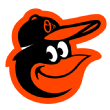 No. 5 overall: Matt Hobgood, Baltimore Orioles (did not reach majors)
No. 5 overall: Matt Hobgood, Baltimore Orioles (did not reach majors)
The Orioles loved Hobgood's makeup, including his competitiveness and desire to go pro, and he did have first-round stuff, albeit not fifth-overall stuff. He pitched poorly out of the chute, got hurt and was done by 2015, throwing just 9⅔ innings above A-ball.
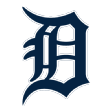 No. 9 overall: Jacob Turner, Detroit Tigers (-2.7 WAR)
No. 9 overall: Jacob Turner, Detroit Tigers (-2.7 WAR)
Turner had the fastest arm and biggest fastball among prep pitchers in the draft, and he had value to the Tigers, who flipped him as part of a trade with the Marlins for Anibal Sanchez and Omar Infante. But he's had a very hard time staying healthy and hasn't ever become more than just a hard thrower who doesn't throw as hard as he used to.
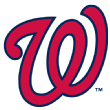 No. 10 overall: Drew Storen, Washington Nationals (4.9 WAR)
No. 10 overall: Drew Storen, Washington Nationals (4.9 WAR)
Storen is a special case: The Nationals had an "unprotected" pick -- meaning if they didn't sign whomever they chose with that selection, they didn't get the pick back the next year -- because the previous general manager, Jim Bowden, failed to sign Aaron Crow the year before. Storen was a command guy, a polished closer at Stanford, probably an end-of-the-first-round talent, who agreed to terms beforehand and allowed the Nats to lock in that pick.
 No. 11 overall: Tyler Matzek, Colorado Rockies (2.7 WAR)
No. 11 overall: Tyler Matzek, Colorado Rockies (2.7 WAR)
Matzek fell to No. 11 because of huge bonus concerns -- he was committed to Oregon and wanted to be able to pitch and hit -- but when the Rockies finally signed him, they started changing his delivery, and everything went pear-shaped from there. He walked 96 in 97 innings in 2011, and it's remarkable that he recovered enough to get parts of two years in the majors. He missed time in 2016 while dealing with crippling anxiety, then spent two years out of organized baseball, and is attempting a comeback this year with Arizona.
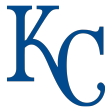 No. 12 overall: Aaron Crow, Kansas City Royals (2.6 WAR)
No. 12 overall: Aaron Crow, Kansas City Royals (2.6 WAR)
Speak of the devil. Crow wanted over-slot money the year before when he was drafted ninth overall by the Nationals, didn't get it and went to independent ball, then back in the draft. This time he signed for less than he wanted from Washington but more guaranteed money than a No. 12 pick would typically get at the time. But he never really panned out, last pitching for the Royals in 2014.
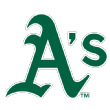 No. 13 overall: Grant Green, Oakland Athletics (-1.6 WAR)
No. 13 overall: Grant Green, Oakland Athletics (-1.6 WAR)
Green is notable because of whom the A's nearly took here -- Mike Trout. Green was seen as a safer college guy with a track record behind him, but he wasn't good at shortstop and never did have a home on the diamond. He also didn't hit, which was a larger issue.
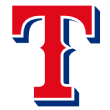 No. 14 overall: Matt Purke, Texas Rangers (did not sign)
No. 14 overall: Matt Purke, Texas Rangers (did not sign)
Purke's non-signing is significant because it apparently was a casualty of the sale of the Rangers. In the interim before they were purchased, the Rangers were under the stewardship of MLB, which capped the amount Purke would be paid at the budgeted $4 million. Purke's camp thought it had agreed to a higher number and he didn't sign. This screwed pretty much everybody: The Rangers got an unprotected pick the next year, taking Jake Skole, who didn't pan out at all, while Purke was a star as a freshman at TCU but was worked very hard and ended up throwing only in the mid-80s by the end of his sophomore year.
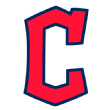 No. 15 overall: Alex White, Cleveland Indians (-0.4 WAR)
No. 15 overall: Alex White, Cleveland Indians (-0.4 WAR)
White was the second North Carolina player taken in the draft, after Ackley, on the back of a splitter or split-change that was one of the best pitches in college baseball that year. But he never had an average breaking ball, and he ended up getting an "extreme DUI" in 2012 that also seemed to derail his progress.
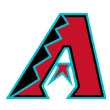 No. 16 overall: Bobby Borchering, Arizona Diamondbacks (did not reach majors)
No. 16 overall: Bobby Borchering, Arizona Diamondbacks (did not reach majors)
Borchering was a bit of a reach here as a high school first baseman with no other position and more power than hit, and he topped out with just 51 games in Double-A, ending his career in 2015.
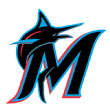 No. 18 overall: Chad James, Miami Marlins (did not reach majors)
No. 18 overall: Chad James, Miami Marlins (did not reach majors)
James was a legit first-rounder, a big lefty from an Oklahoma high school who looked like he'd have a three-pitch mix, but he hurt his shoulder and bounced around, with his last pro experience a brief comeback attempt in 2015 with the Rangers.
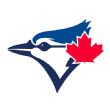 No. 20 overall: Chad Jenkins, Toronto Blue Jays (1.4 WAR)
No. 20 overall: Chad Jenkins, Toronto Blue Jays (1.4 WAR)
Jenkins was more of a second-round talent, and he was unusual for the Jays in this time period because they tended to swing for the fences when they had high picks. The right-hander made just 46 major league appearances, the last in 2015.
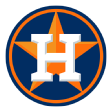 No. 21 overall: Jiovanni Mier, Houston Astros (did not reach majors)
No. 21 overall: Jiovanni Mier, Houston Astros (did not reach majors)
Mier was a soccer star who had a strong spring to push himself into the first round as a premium defensive shortstop. He had a chance to hit, but he didn't hit at all and ended up a worse defender than anticipated.
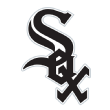 No. 23 overall: Jared Mitchell, Chicago White Sox (did not reach majors)
No. 23 overall: Jared Mitchell, Chicago White Sox (did not reach majors)
Mitchell was a two-sport guy at LSU, playing football as well as roaming the outfield, and was the rare upside play among college position players because he'd played relatively little baseball compared to his peers but was every bit the athlete you thought he'd be. His career might have gone very differently had he not missed all of 2010, his first full pro season, after he suffered a severe tear to a flexor tendon in an ankle. His speed never seemed the same afterward, and he lost 500-plus at-bats he desperately needed.
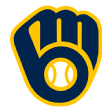 No. 26 overall: Eric Arnett, Milwaukee Brewers (did not reach majors)
No. 26 overall: Eric Arnett, Milwaukee Brewers (did not reach majors)
Arnett was worked extremely hard at Indiana in his draft year -- enough that I wrote about it at the time -- and was never effective or durable in pro ball, throwing a total of 290 innings, all at A-ball and below. A torn ACL took out most of his 2013 season, after which the Brewers released him.
 No. 27 overall: Nick Franklin, Seattle Mariners (1.3 WAR)
No. 27 overall: Nick Franklin, Seattle Mariners (1.3 WAR)
I ranked Franklin as more of a third-round talent in 2009, then he went in the first and went bananas in his first full year in the minors in 2010, hitting 23 homers as a 19-year-old in low-A. It was a mirage; he never hit more than 16 homers in any season afterward, and couldn't stay at short. He's in Triple-A with the Pirates this year.
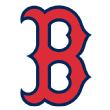 No. 28 overall: Rey Fuentes, Boston Red Sox (-0.4 WAR)
No. 28 overall: Rey Fuentes, Boston Red Sox (-0.4 WAR)
The diminutive Fuentes was supposed to be a plus defender in center field who would hit and get on base, and the Red Sox traded him the next year to San Diego in the deal for Adrian Gonzalez. Fuentes turned out to be less of a defender than expected and was just a slap hitter who didn't get on base enough to be more than a four-A player.
 No. 30 overall: LeVon Washington, Tampa Bay Rays (did not sign)
No. 30 overall: LeVon Washington, Tampa Bay Rays (did not sign)
Washington turned down $1.1 million from the Rays and didn't sign; his father later said they had a higher offer from another team -- so what? The other team didn't draft him -- and accused the Rays of all kinds of shenanigans. Washington went back in the draft the next year, signing with Cleveland for $1.2 million, but never got out of A-ball, losing time to a thumb injury and rarely hitting for average. A 70 runner at his peak, he also was limited to left field by a shoulder injury he first suffered in high school.
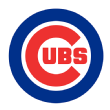 No. 31 overall: Brett Jackson, Chicago Cubs (0 WAR)
No. 31 overall: Brett Jackson, Chicago Cubs (0 WAR)
Jackson wasn't on my top 100 entering the draft; he had great tools, especially for a college player, but struck out a lot and was going to keep doing so because of his swing. He hit well in the low minors but struggled just to make contact in Triple-A.
 No. 32 overall: Tim Wheeler, Colorado Rockies (did not reach majors)
No. 32 overall: Tim Wheeler, Colorado Rockies (did not reach majors)
I'm surprised Wheeler never got so much as a cup of coffee in the bigs. He hit 33 homers in Double-A as a 23-year-old, striking out too much and struggling against lefties, but he could play above-average defense in an outfield corner and do some damage against right-handed pitching. He spent four years in Triple-A but was out of baseball after 2015.
